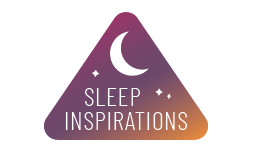Positive Airway Pressure
Split Night Sleep Studies
Sleep Studies Introduction
Introduction Text (if any)
Positive Airway Pressure Sleep Studies
A Positive Airway Pressure Sleep study is an overnight sleep test in a facility while wearing a form of positive airway pressure. Positive airway pressure is the most used form of treatment for obstructive sleep apnea.
Sleep testing on positive airway pressure may be ordered for many reasons. A new diagnosis of Obstructive Sleep Apnea is the most common. For a newly diagnosed patient, the study is started at a low pressure and the pressure is increased (titrated) upwards until the apnea is corrected. A positive airway pressure sleep test gives a patient experience with sleeping with pressure, a chance to try one or more types of masks and observe how the night affects the next day. The sleep physician
will benefit by being able to identify the best pressure or pressures, the type of machine that condition requires and if there are any additional sleep disorders present.
There are times that a sleep study on positive airway pressure is performed when apnea is known to be a problem and a person is already wearing positive airway pressure nightly. These tests are performed when a person has not responded to the therapy appropriately. Symptoms may have persisted. A second disorder of sleep is suspected.
The Test
The CPAP titration study is performed to measure the effect of breathing air at a pressure that is slightly higher than atmospheric pressure. The most common form of this test uses constant positive airway pressure (CPAP). While the subject sleeps, the technicians will monitor measurements for obstructive apnea and gradually increase the amount of pressure to control the obstructions. People who are found to have obstructive sleep apnea during a sleep study at home or on a facility diagnostic sleep test will benefit from a CPAP titration study.
Testing sleep on Positive Airway Pressure (PAP)
A sleep test with CPAP is very similar to a diagnostic sleep test. The only difference is that the air breathed will be room air at a slightly higher pressure through a special mask. Before the test is started the sleep
technician will assist you in selecting a mask to wear. Masks are specially designed and constructed to use with PAP treatment. All of the sensors used during a diagnostic study will be used again. The only addition
will be the positive airway pressure mask.
The sleep technicians are experienced professionals who have assisted hundreds of individuals with choosing a mask. They will guide your selection. If you have serious worries about wearing a mask during sleep, let the Sleep Center staff know and be sure to tell your sleep technician the night of your study.
Identifying the correct pressure and mask for each individual is the key to successful Positive Airway Pressure treatment.
Split Night Sleep Studies
A split night sleep test is an overnight sleep test done in a sleep testing facility. It is usually a planned change in the testing no later than half way through the night. It occurs when a certain level of Obstructive Sleep Apnea is found during the first few hours of the sleep test. On some tests, the night will be split when severe apnea is discovered although it was not planned.
The first few hours of the test is performed to observe and record your usual sleep. Sleeping while wearing the diagnostic monitors may not feel like normal sleep to you, but sleep observed while wearing those monitors is usually representative of your typical sleep. The diagnostic portion of the study will be stopped when a certain level of apnea is observed. You physician usually determines the level of apnea at which the study will be split.
For the remaining portion of the test time, treatment with positive airway pressure will be started and continued through the night of the test. Thus, the first half of the night is used to establish the diagnosis of obstructive sleep apnea while the second half is used to determine how much pressure will be needed to treat the apnea.
The pressure test performed during the second half of the night is called a Positive Airway Pressure titration or more commonly a PAP Titration. A PAP titration is performed to measure the effect of breathing air at a slightly higher pressure. During this stage of the test, the sleep technician monitors your measurements for obstructive apnea and gradually increases the amount of pressure to determine the pressure required to control the obstructions.
A person with sleep disordered breathing problems might be able to be diagnosed and have treatment assessed in one night when a split night test is performed. However, realize that you may still have significant sleep apnea even though you did not have a split night study.
Sometimes a scheduled split night test does not get split. This can occur when no apnea is observed, when the amount of apnea observed does not reach the level required to meet the criteria, or when there was not enough time left in the study to complete the titration.
Positive airway pressure treatment is the first treatment considered for apnea because it is the safest most effective therapy for obstructive sleep apnea.
Last updated: 6/2022
